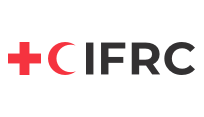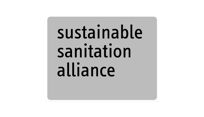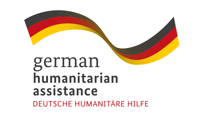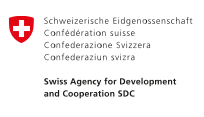1. How is the platform structured?
The Hygiene Promotion in Emergencies online platform is divided into three major sections (see also menu at the top of the page):
Hygiene Promotion Components
This section is considered the core of the platform and provides a detailed description of the six key hygiene promotion components. These include: Preconditions and Enabling Factors P , Community Engagement and Participation E , Assessment, Analysis and Planning A , Communication C , Social and Behaviour Change B and Monitoring, Evaluation, Accountability and Learning M . By clicking on a specific component section users can access more in-depth information compiled in a series of short sub-chapters. The sub-chapters describe the component’s main purpose, an overview and a practical process and good practice section. Each sub-chapter also provides links to key resources and publications.
Hygiene Promotion Tools and Methods
This section is a compilation of all the relevant hygiene promotion tools and methods that are commonly used in emergencies. Each is summarised in a concise one-page information sheet outlining its main features and basic working principles. The information sheets identify when, where and with whom the tools and methods can be used including do’s and don’ts and a practical example. The purpose of these sheets is to enable users to compare tools and approaches and select those most suitable for their circumstances. Each tool or method provides links to key resources and publications with practical and in-depth information.
Hygiene Promotion Frameworks and Approaches
This section is a compilation of existing hygiene promotion frameworks and approaches. They may use several of the tools and methods described under tools T . Each of the frameworks and approaches is described in a short information sheet outlining its main features and working principles and where and when they are applicable. The sheets include a list of all the tools and methods used as part of the approach (linked to the respective tools and methods), the main requirements and investments needed and any existing evidence of effectiveness. They also include practical advice on do’s and don’ts, a representative case study and links to key resources and publications for each framework and approach.
2. How to use the platform?
The platform can be used in very different ways depending on who is using it and for what purpose.
Reference Tool: At its core the Online Platform is a user-friendly compilation of the most relevant and sector-reviewed components, tools, methods and approaches available to design and implement successful Hygiene Promotion interventions. It draws on latest initiatives, materials and evidence, disaggregating Hygiene Promotion into its functional components, clarifying terminology adn providing guidance on the most appropriate solutions ina given context. Hence it can be used as a structured reference tool for WASH practitioners and capacity development institutions. Basically, a more interactive version of the hard/softcopy publication.
Filtering of Tools and Approaches: Using the filter bar at the top of the ‘tools and methods’ and the 'frameworks and approaches" section can be another potential entry point that allows reducing complexity and pre-selecting only those tools and frameworks that are suitable for a specific scenario or context. Based on concrete site settings (like e.g. the phase of emergency for which a technology solution is needed, the target group or the application level) the number of potentially suitable tools and frameworks can be reduced to a more digestible size and makes the selection easier. The categorisation used for each of the filters should not be seen as fixed and incontrovertible and may vary under certain local conditions. The categorisation is rather meant to support rapid informed decision making and is a complement to, not a substitute for, sound professional judgement.
Watchlist: Specific components, tools and framworks of interest can be put on a separate watchlist (by clicking on the asterisk next to each technology) either to safe it for later, for print out or to share and discuss it further with colleagues. The watchlist can be accessed by clicking on the ‘watchlist’ tab on the upper left corner. For each component, tool and framework a 2-page summary pdf-document is available for download or print out.
3. How to use the filter options?
The filter bar at the top of the ‘Tools and Methods’ and ‘Frameworks and Approaches’ section allows reducing complexity and pre-selecting only those tools and frameworks that are suitable for a specific scenario or context. Based on concrete site settings the number of potentially suitable tools and frameworks can be considerably reduced to a more digestible size and makes selection easier. By clicking on the respective boxes under each of the filters only those tools and frameworks will be shown that correspond to the respective boxes. The currently active filters are always shown directly under the filter bar. The active filters can be cleared/deactivated by clicking on the ‘clear filter’ button or by deactivating individual boxes of currently active filters. The selected tools and frameworks that will appear when filters are active can give a first indication of which tools and frameworks may be suitable in a particular context, but should not be seen as fixed and incontrovertible and may vary under certain local site conditions. The categorisation is rather meant to support rapid informed decision making and is a complement to, not a substitute for, sound professional judgement. The available filter options include the following:
Hygiene Promotion Component
Indication of whether a tool or framework is commonly used in relation to the key hygiene promotion components outlined in the Components section. The corresponding filter options include: Preconditions and Enabling Factors P , Community Engagement and Participation E , Assessment, Analysis and Planning A , Communication C , Social and Behaviour Change B and Monitoring, Evaluation, Accountability and Learning M . The suitability of a tool or framework in relation to any of the hygiene promotion components is indicated by asterisks (two asterisks: suitable, one asterisk: less suitable, no asterisk: rarely suitable or unsuitable). All of the tools and frameworks incorporate some form of community engagement and communication and aim to influence and change behaviour. The asterisks have been assigned according to their relative appropriateness.
Response Phase
Indication of appropriateness of the tools and frameworks according to the four main response phases:
- Acute Response: immediately following an emergency
- Stabilisation: transition phase starting after the first weeks of an emergency lasting several months or longer
- Recovery: longer-term approach usually starting after immediate relief interventions aiming to recreate or improve on pre-emergency situation.
- Development: long-term approach with stronger focus on universal access and longer-term sustainability of WASH services.
An indication of whether a tool or framework is suitable for a specific response phase is given using asterisks (two asterisks: suitable, one asterisk: less suitable, no asterisk: rarely suitable or unsuitable). The level of appropriateness is decided through a comparison between the different tools and frameworks, mainly based on applicability and the speed of implementation.
Target Group
Refers to segments of a population who could better participate when using a specific tool or framework. It is subdivided into children, adults, elders, people with disabilities, local leaders and/or the society as a whole. An indication of whether a tool or framework is suitable for targeting a specific population segment is given using asterisks (two asterisks: suitable, one asterisk: less suitable, no asterisk: rarely suitable or unsuitable).
Application Level
Refers to the spatial context and scale for which the frameworks or approaches are most appropriate. It is subdivided into the following levels: individual/household, community/municipality, institution, camp, rural and/or urban contexts. An indication of whether a tool or framework is suitable at a specific spatial level is given using asterisks (two asterisks: suitable, one asterisk: less suitable, no asterisk: rarely suitable or unsuitable).
Target Behaviour
Refers to the most important hygiene behaviours typically addressed as part of hygiene promotion interventions. An indication of whether a tool or framework is suitable at targeting a specific hygiene behaviour is given using asterisks (two asterisks: suitable, one asterisk: less suitable, no asterisk: rarely suitable or unsuitable).
4. What are the key criteria used to describe each hygiene promotion sub-component?
Each of the hygiene promotion component sub-chapters follow a similar structure, describing the main purpose, most important take-aways, an overview description and practical information on process and good practice. It also includes a references section with links to further reading materials.
5. What are the key criteria used to describe each hygiene promotion tool or method?
Each tool or method is summarised with a short general description, in-depth information regarding its applicability, some practical ‘do and don’t’ priority actions and an example case study. Some filterable key decision criteria are summarised in a separate column and provide easy-to-grasp general guidance about the hygiene promotion components it is related to, the response phase, application level, target group and its main purpose. It also includes a references section with links to further reading materials.
6. What are the key criteria used to describe each hygiene promotion framework or approach?
Each framework or approach is summarised with a short general description, a collection of tools and methods used as part of the approach, additional in-depth information regarding its applicability, the main requirements and investments needed, evidence of effectiveness, some practical ‘do and don’t’ priority actions and an example case study. Some filterable key decision criteria are summarised in a separate column and provide easy-to-grasp general guidance about the hygiene promotion components it is related to, the response phase, application level, target group, target behaviour and its main purpose. It also includes a references section with links to further reading materials.
7. Who is the target group of the platform?
This platform mainly targets humanitarian staff, local first responders, engineers, planners, hygiene promoters, communications and community engagement professionals, government representatives, academic institutions, capacity strengthening agencies and other WASH professionals involved in humanitarian response, preparedness, stabilisation and recovery activities.






